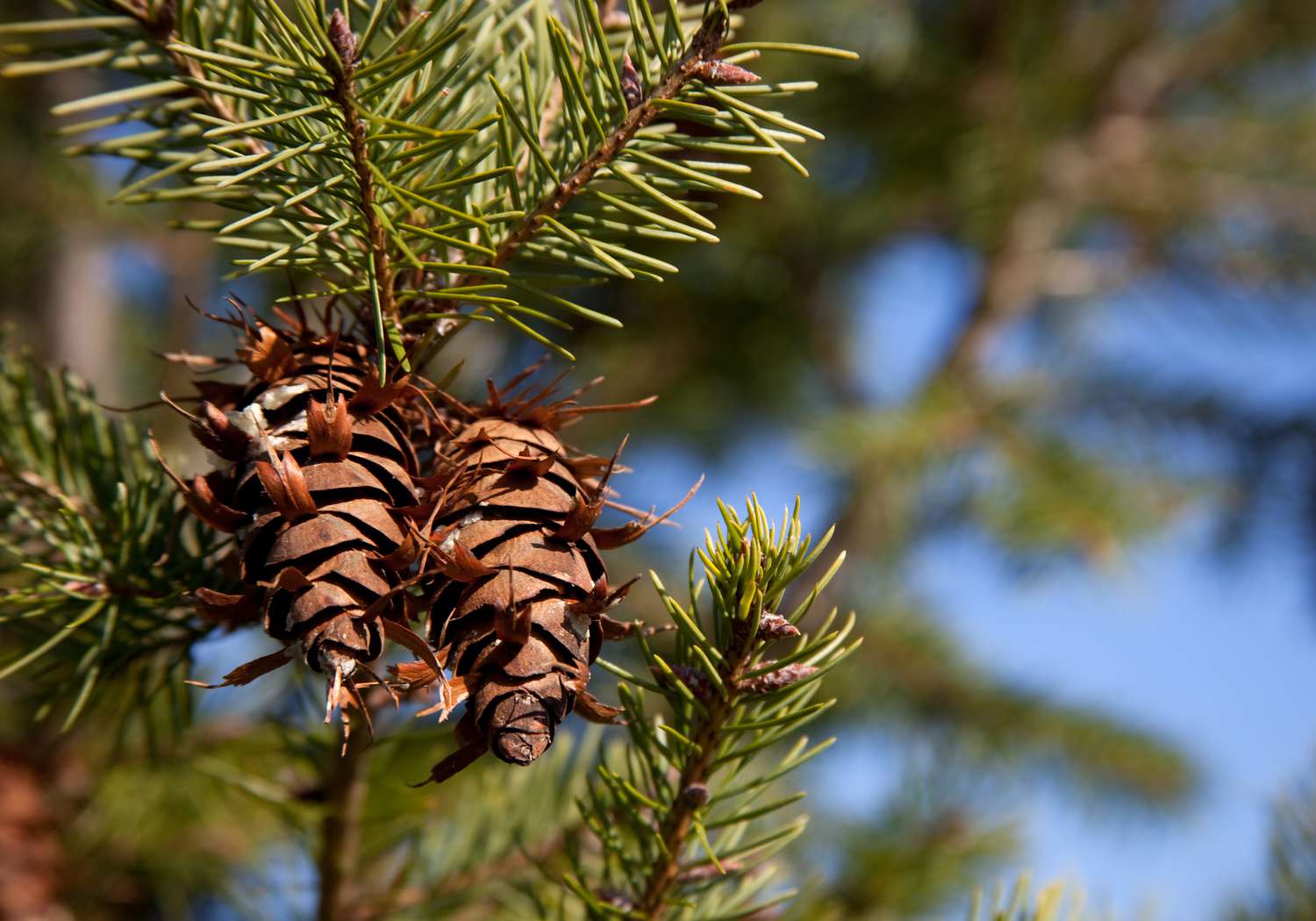
The Douglas fir tree, known for its majestic stature and remarkable resilience, is a prominent symbol of strength and endurance in the world of flora. This evergreen conifer, scientifically classified as Pseudotsuga menziesii, holds a revered position in forestry and ecological systems. With its towering height, aromatic fragrance, and rich historical significance, the Douglas fir captivates the imagination of nature enthusiasts and forestry experts alike. In this article, we delve into 18 fascinating facts about the Douglas fir tree, exploring its ecological importance, cultural relevance, and remarkable characteristics. From its role in providing habitat for diverse wildlife to its utilization in timber production, the Douglas fir stands as a testament to the enduring connection between humanity and the natural world. Join us on a journey through the captivating realm of the Douglas fir tree, uncovering its intriguing traits and the profound impact it has on our environment and collective consciousness.
Key Takeaways:
- Douglas fir trees, not true firs, are iconic in western North America. They’re super tall, have unique cones, and provide essential wildlife habitat. They’re like nature’s superheroes, strong and essential!
- Douglas fir trees are like nature’s guardians, with valuable timber, medicinal properties, and a long lifespan. They’re resilient in challenging environments and inspire art, literature, and conservation efforts. They’re truly remarkable!
Douglas Fir Trees are Not True Firs
Despite their name, Douglas fir trees are not true firs. They belong to the genus Pseudotsuga, which means "false hemlock." This distinction sets them apart from true firs, such as balsam fir and white fir.
Douglas Fir Trees are Native to North America
Douglas fir trees are native to the forests of western North America, from British Columbia in Canada to California in the United States. They thrive in diverse ecosystems, from coastal regions to mountainous terrains.
Douglas Fir Trees Can Grow to Towering Heights
These majestic trees are known for their impressive height. In favorable conditions, Douglas fir trees can soar to heights of over 300 feet, making them one of the tallest tree species in the world.
Douglas Fir Trees Have Distinctive Cones
The cones of Douglas fir trees stand out due to their unique features. They have distinctive three-pointed bracts that extend beyond the scales, giving the cones a distinctive appearance.
Douglas Fir Trees Feature Characteristic Needles
The needles of Douglas fir trees are flat, soft, and fragrant. They are arranged spirally on the twigs, radiating in all directions, and give off a sweet, citrusy scent when crushed.
Douglas Fir Trees are Valued for Their Timber
The wood of Douglas fir trees is highly valued for its strength, durability, and versatility. It is used in construction, furniture making, and various woodworking applications.
Douglas Fir Trees Provide Essential Wildlife Habitat
The dense foliage and large size of Douglas fir trees provide crucial habitat for diverse wildlife, including birds, squirrels, and other forest-dwelling creatures.
Douglas Fir Trees Play a Vital Role in Ecosystems
These trees contribute to the health and stability of forest ecosystems by providing erosion control, regulating water flow, and fostering biodiversity.
Douglas Fir Trees are Symbolic in Native American Culture
In Native American cultures, Douglas fir trees hold symbolic significance and are often associated with strength, resilience, and the enduring spirit of nature.
Douglas Fir Trees are Popular Christmas Trees
Due to their attractive appearance, pleasant fragrance, and excellent needle retention, Douglas fir trees are a popular choice for Christmas trees in many households.
Douglas Fir Trees Have Medicinal Properties
Various parts of the Douglas fir tree, including the needles and bark, have been used in traditional medicine for their purported healing properties.
Douglas Fir Trees are Vulnerable to Pests and Diseases
Despite their resilience, Douglas fir trees are susceptible to various pests and diseases, including bark beetles and root rot, which can pose significant threats to their health.
Douglas Fir Trees Have a Long Lifespan
In optimal growing conditions, Douglas fir trees can live for several centuries, with some specimens exceeding 1,000 years in age.
Douglas Fir Trees Have Adapted to Fire
These trees have evolved to withstand and even benefit from natural wildfires, as their thick bark provides protection and their cones release seeds in response to the heat.
Douglas Fir Trees Are Subject to Conservation Efforts
Due to logging and habitat loss, conservation initiatives aim to protect and sustain the populations of Douglas fir trees in their native habitats.
Douglas Fir Trees Have Inspired Art and Literature
The striking beauty and cultural significance of Douglas fir trees have inspired artists, writers, and poets throughout history, contributing to their enduring appeal.
Douglas Fir Trees Are Resilient in Challenging Environments
These trees exhibit remarkable adaptability and resilience, thriving in diverse climates and demonstrating an ability to endure harsh environmental conditions.
Douglas Fir Trees Contribute to Sustainable Forestry Practices
The cultivation and management of Douglas fir trees support sustainable forestry practices, promoting responsible stewardship of forest resources.
Douglas fir trees, scientifically classified as Pseudotsuga menziesii, are iconic conifers that hold a special place in the ecosystems of western North America. These majestic trees, despite their name, are not true firs and are renowned for their towering heights, distinctive cones, and fragrant foliage. With their valuable timber, essential wildlife habitat, and symbolic significance in Native American culture, Douglas fir trees play a vital role in the natural world. They are also popular as Christmas trees and have inspired art, literature, and conservation efforts. While they face challenges from pests and diseases, their resilience, longevity, and adaptability make them a symbol of strength and sustainability in challenging environments. As guardians of the forest, Douglas fir trees continue to captivate and inspire, embodying the enduring spirit of nature.
Conclusion
In conclusion, Douglas fir trees are remarkable species that play a crucial role in various ecosystems. Their towering presence, exceptional wood quality, and resilience make them invaluable to both nature and human activities. As a dominant tree in the Pacific Northwest, Douglas firs contribute significantly to the region's biodiversity and economic prosperity. Understanding the unique characteristics and ecological significance of Douglas firs sheds light on the importance of conservation efforts and sustainable forestry practices. These magnificent trees continue to inspire awe and admiration, serving as a testament to the enduring beauty and utility of nature's creations.
FAQs
What is the average lifespan of a Douglas fir tree?
Douglas fir trees typically live for around 500 to 800 years, with some exceptional specimens reaching over 1,000 years in age.
Are Douglas fir trees susceptible to any specific diseases?
While Douglas firs can be affected by various pests and diseases, they are particularly vulnerable to root rot, caused by fungi such as Armillaria and Phellinus. Proper forest management and monitoring are essential to mitigate these risks and preserve the health of Douglas fir populations.
Douglas fir trees captivate nature enthusiasts with their towering presence and ecological significance. Learning about these iconic evergreens sparks curiosity about other natural wonders. Proxy Falls, a stunning waterfall nestled in the Willamette National Forest, beckons exploration with its mesmerizing beauty and intriguing characteristics. Uncovering the secrets of Proxy Falls promises an enlightening journey into the marvels of the natural world. From the awe-inspiring heights of Douglas firs to the cascading waters of Proxy Falls, nature never ceases to amaze and inspire those who take the time to appreciate its wonders.
Was this page helpful?
Our commitment to delivering trustworthy and engaging content is at the heart of what we do. Each fact on our site is contributed by real users like you, bringing a wealth of diverse insights and information. To ensure the highest standards of accuracy and reliability, our dedicated editors meticulously review each submission. This process guarantees that the facts we share are not only fascinating but also credible. Trust in our commitment to quality and authenticity as you explore and learn with us.


